2.4 Seasonality
Sachiko: Years ago, I wrote a short text to introducing Kaiseki Horin 懐石方林, Beniya Mukayu’s restaurant, to our guests. It reads:
“We are committed to showcasing the best seasonal ingredients grown and purchased by our suppliers. We spare no effort in our work, and our good sense drives us to maximize their potential and reveal all the beauty of their flavors. We thus hope to provide you with this unique seasonal taste of Kaga, Japan”
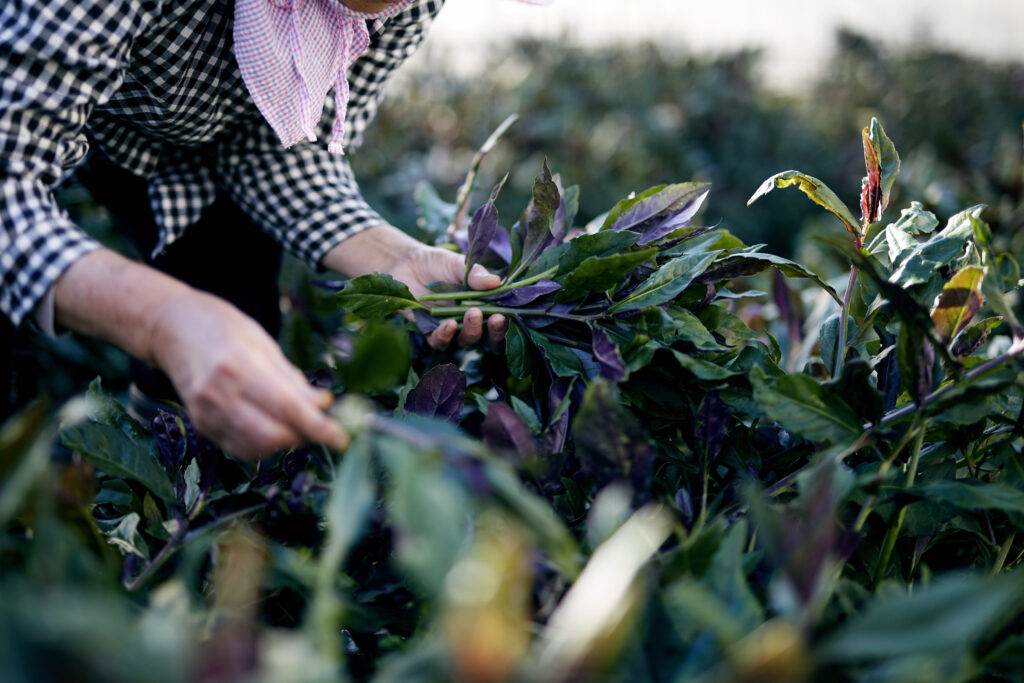
Now I noticed that my text is not so far from Dogen’s teaching in paying attention to the ingredients as much as possible.
There is also another point that we discussed, and it concerns seasonality. In Japan seasonality and freshness are really important, whereas in other countries it is not necessarily so. You can see that the way of cooking that Dogen advocated is the same, considering what ingredients are the best and making the best out of them thinking of our guests. When I say ‘what ingredients are the best’, I mean taking into account several factors: the quality, seasonality and freshness, of course, but also how they are sourced, the relationship with the supplier and their cultural value too. Personally, I think that the most enjoyable thing about Japanese food is seasonality, which is rooted in how Japanese are attached to and accept brevity. You have explained this beautifully in chapter two and, interestingly, the quote on cherry blossom, fireflies and red leaves comes after a passage on food… How do you see seasonality in relation to Japanese food culture?
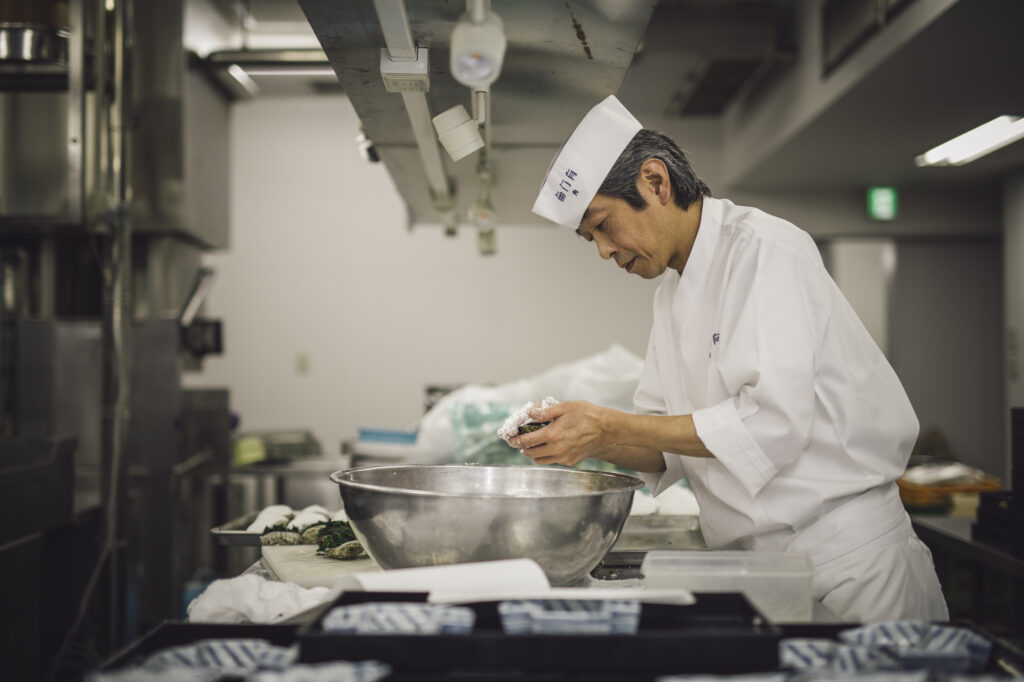
Scott: Every culture has seasonality to it. I mean, for example, in Europe you have black truffles in the winter, you will have porcini mushrooms in the fall, different types of fish in different times of the year, asparagus in the spring and so on and so on… apples in September, cherries in July, and so on and so on… but the difference, in my experience with Japanese seasonality and European or North American seasonality, the ones that I am more familiar with, is that the Japanese seasonality is more… intense, so that you’ll have the seasons in Japan… you can have a situation where it’s three days, it’s four days, you know, it’s very brief and also people value it and it doesn’t necessarily have to be crazy expensive… and similar to Europe, similar to North America, it can be a way to celebrate the season.
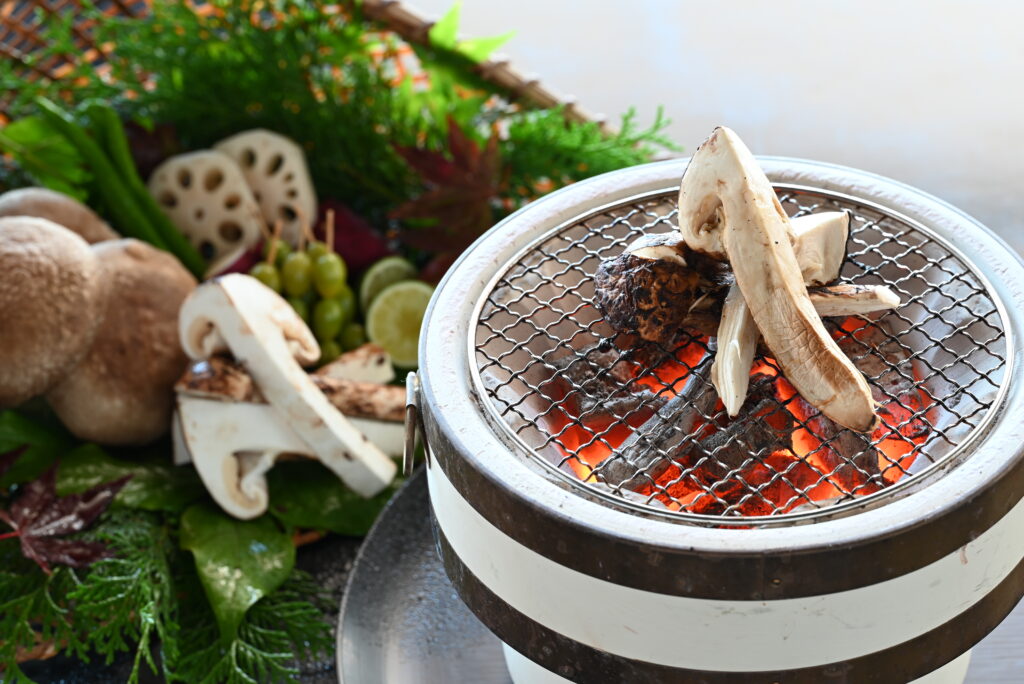
So my favourite example was some years ago, maybe ten years ago, I was in a lovely little restaurant in Kyoto with my wife and we were having hamo ハモfor dinner. It was a restaurant that specialized in hamo, which is a kind of conger heel, and it meant that they had four courses of the conger eel and you sat at the countertop – very simple restaurant, very simple but expensive – and the food was really good. The chef put on the countertop a little metal basket, and in the metal basket there was a matsutake 松茸, a beautiful, big, matsutake mushroom. I said to the chef: “Oh, that is beautiful!” He thanked me and then I asked him how much it would cost to have it as part of our dinner. He said: “It would be JPY 4,000,” and I thought, that is a lot of money to spend on one mushroom… We were the only Westerners in the whole restaurant, and because of that the Japanese people around us were more relaxed, and they were really being themselves, they were not dealing with too many Westerners, so they were all very nice to us, they were talking and laughing with us. The guy sitting next to me was a cardiac surgeon, relaxed and very cool, he was successful so he had that kind of coolness and he was there having a good time with his girlfriend… I turned to him and asked:
And every time since then I think of it all the time, what he was saying: it’s a special thing, it’s really special and tomorrow that mushroom is not going to be there. It’s gone. And maybe next week the season will be over. Whereas the champagne is in the cellar, you take it, it’s the same champagne week after week, there is no season attached to it. What he was saying to me, what I heard was: celebrate the season with the food! And even if that costs a little bit more, it is a way to celebrate the person who got the mushroom, it’s a way of celebrating the chef who knows what to do with it, it is a way to connecting you to nature. That’s an expensive example, but you can be in Kyushu and have sweet potatoes during the season over a fire, roasted, with a little bit of shochu 焼酎and it’s so nice! It’s so nice! It doesn’t have to be expensive: food can just be a way to connect us to nature and to the season… so I think that while not everybody – I mean not everybody in Japan – is interested in food, but if you are Japanese and you are interested in food, you have some feeling for the season that is quite extraordinary. And certainly, as I said, other countries they have seasons and people pay attention to the season. Italy is probably the most seasonal country I have been to outside of Japan and the cuisines in a lot of ways are very similar, but what I mean is that in Japan it’s just more intense.
Sachiko: At Beniya Mukayu we currently have a young French cook who studied French cuisine in France and trained in the UK before coming here to learn about Japanese cuisine. When we talked about seasonality and the general absence of sauces, he said that:
Cédric: “The concept of seasonality is important also in France and in the UK, but the ingredients are obviously different. In countries where the seasons are more varied because of geography and climate, like France or Japan, seasonality is more emphasized.
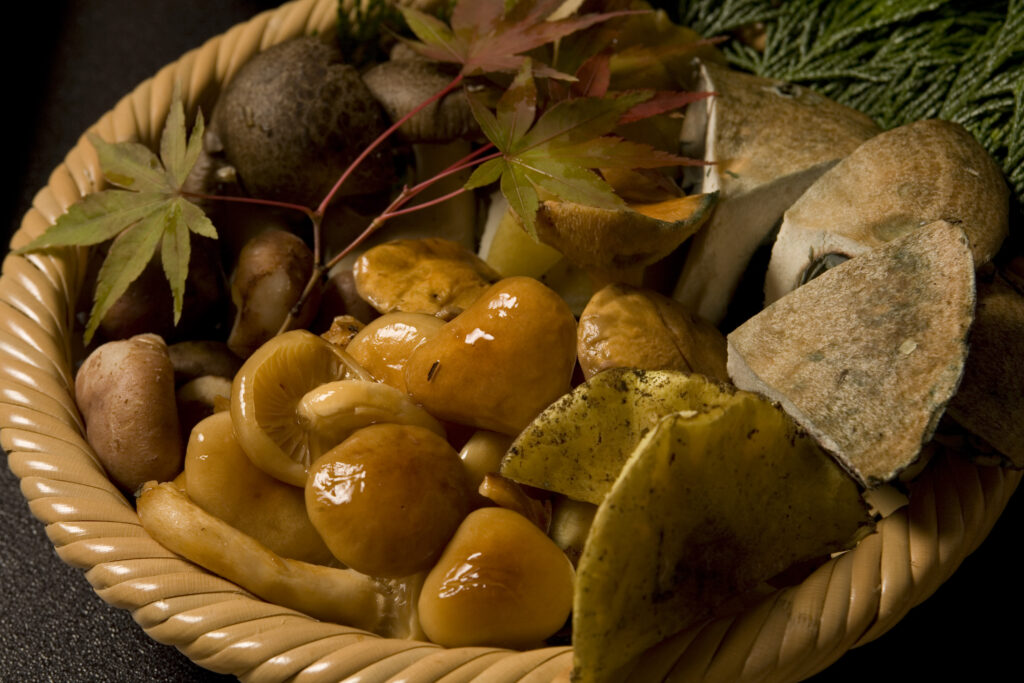
“What do you think? Do you think that I should buy that matsutake for JPY 4,000 or… what do you think?” He looked at me, kept very quiet for about ten seconds and then said: “It’s cheaper than champagne.” I thought: that’s a good answer.
Regarding the menu, in Japan major changes are done every three months, following the four seasons and the menu changes completely. There are no dishes that are available from January to December: take sashimi, for instance, we use different fishes throughout the year. There are also minor changes every now and then, too. In France or in the UK the menu changes a lot every month, but there are some dishes – especially the main courses – where the meat or the fish is always the same, what changes is the garnish (side dishes).
Regarding seasonings and sauces, French cuisine is based on sauces: the rule that is taught at professional cooking schools is: main dish + side dishes + sauces. Sauces are based on stock, which is made with bones (from meat or fish), onion, celery and carrots, and aromatic herbs. Here in Japan the basic stock is dashi, but it is used for simmering and marinating…”
In fact, in Beniya Mukayu’s kitchen we only use the freshest high-quality ingredients and enhance their natural flavors by avoiding heavy seasoning. We also avoid redundant processes or a lot of dish décor. Instead, we put a great effort in highlighting freshness, seasonality and delicacy of flavours.
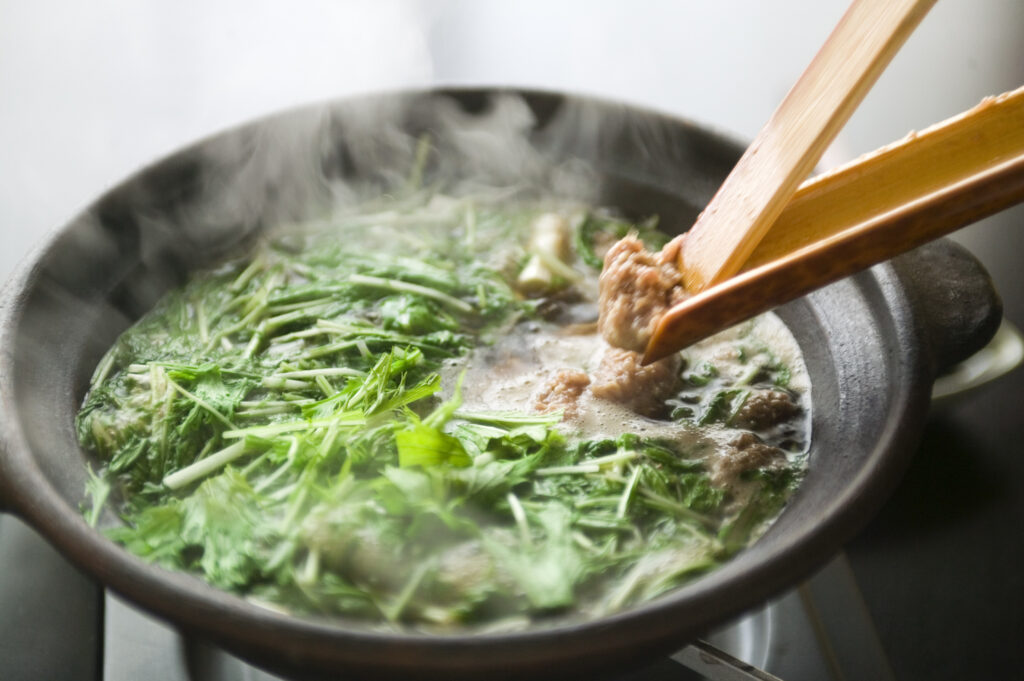
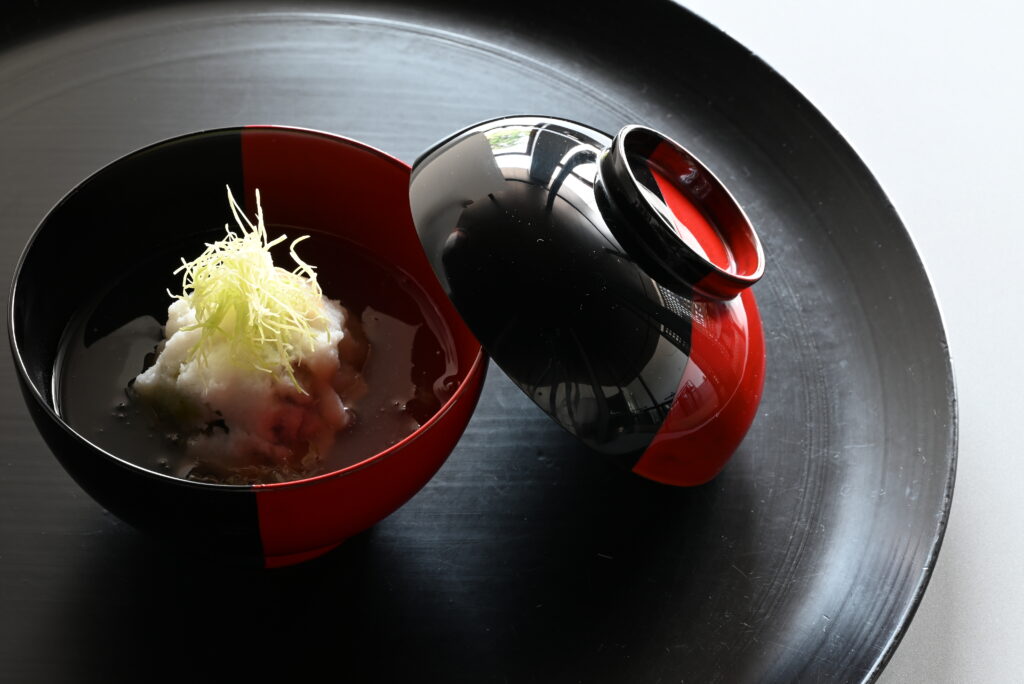
Our chef Kaku 角san is very particular about dashiだし汁, the basic stock that is used in almost all our dishes, which is crucial for the umami 旨味 flavour. We use different kinds of dashi prepared using only the finest konbu kelp 昆布from Hokkaido. Here at Beniya Mukayu there is no signature dish that remains the same all year round, whereas in France or in the UK, there are dishes that were pretty similar throughout the year, especially the main courses. Scott, you have been working in professional kitchens in the US and you also wrote a book, Back of the house, on professional kitchens… what do you think?
Scott: I haven’t been trained, and I am not a professional cook, but I definitely worked in three professional kitchens, and I have interviewed great chefs like Thomas Keller and Daniel Boulud, I spent a lot of time with them… I was lucky enough to be invited by Joël Robuchon to spend three days with him, just the two of us in Las Vegas, and these chefs, and many others in several countries, including Japan, taught me a lot about the importance of seasonality as well as dishes served no matter what season it is. For example, Robuchon would serve white truffles during the white truffle season, but he would serve a roasted chicken year-round. Absolutely. And it doesn’t change. In his restaurant people come because they want that roasted chicken. Other chefs of course have dishes they are known for. But then when you go to fancy restaurants in Japan, at ryokan or in the cities, not only do menus change every three months, they change every week, they change every month, they change constantly. It requires a steady clientele who is willing to take a chance, clients who say: “I trust you”, it requires the clientele to have an open heart and an open mind… The great restaurants of New York, Tokyo, or Kanazawa they have the same clients. There is a chef in Kanazawa, Shinichiro Takagi高木慎一郎 at Zeniya 銭屋, he has the same clients for twenty years, or longer, and they do not care what he cooks, because they just love his food. And his food changes constantly. It requires trust, it requires a relationship, the customer has to trust the chef.
Sachiko: Yes, and in a way also accept about not choosing from a menu (omakase お任せ). You don’t impose your likes and dislikes, just accept what the chef thinks is the best.
Scott: That’s one of the points that I try to make to North Americans who have not been to Japan before: often when you go to a beautiful restaurant or a beautiful ryokan there is no menu. I just tell them: “Before you go, be sure you tell them allergies, or maybe you have a religious reason for not eating something, whatever it is, you are vegetarian, it doesn’t matter, they don’t care, but just tell them beforehand”, but if anything outside of that, you don’t get to choose, you know what I mean? A famous chef once said to me: “I love when there’s a set menu because I don’t have to think about it, I let the other person decide, and that person is the expert, that person is the teacher, that person knows what they are doing”. It’s a different relationship to the food that people have in Japan. It’s just different. I mean, I love yakitori焼き鳥, Japanese grilled chicken, and then you get to choose. It’s just so good, so good! So relaxing, with a cold beer… But even yakitori – we all know that you can go to a yakitori restaurant and there is a set menu, you do not choose, and some people would go and say: “What is that?” And you say: “Just eat it! Or give it to the person next to you but do not make a fuss, it’s okay. You don’t want to know what it is, don’t ask!”, you have to have an open mind.





